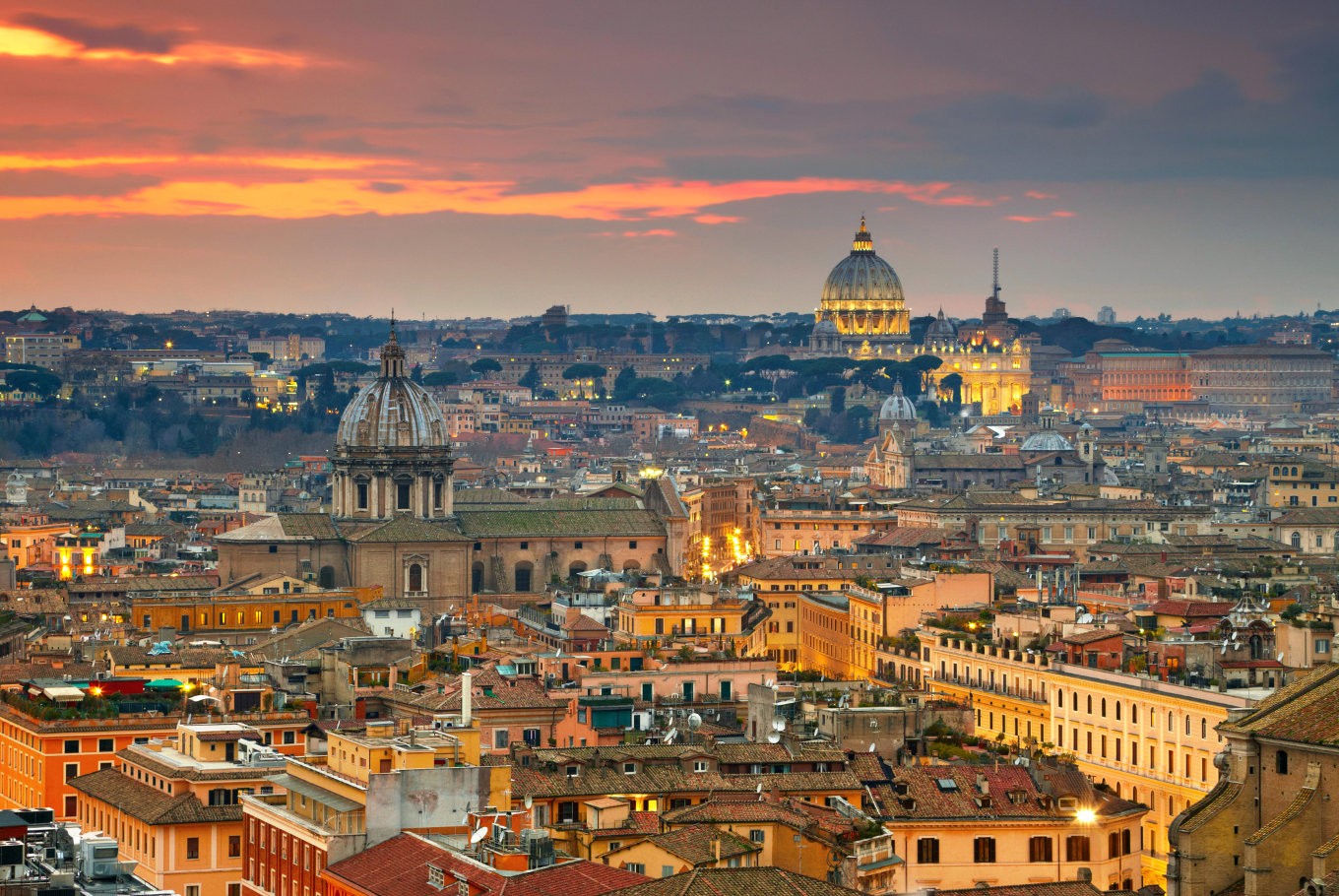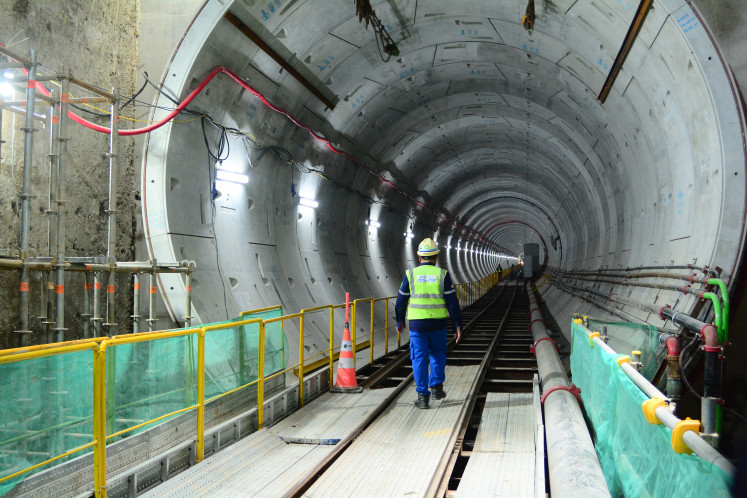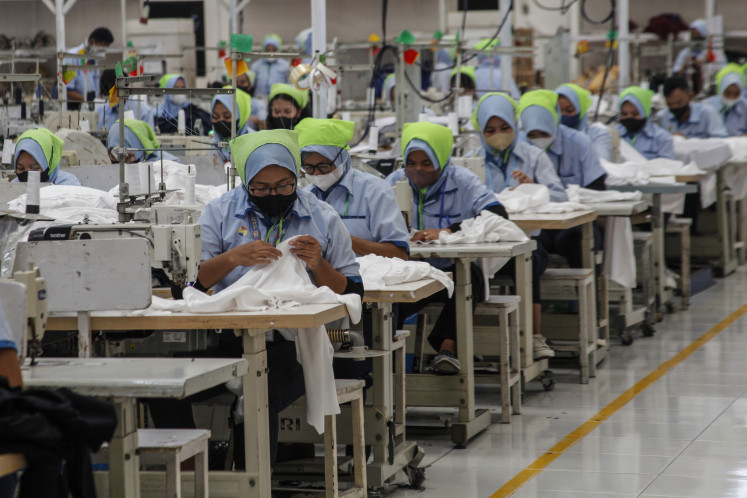Popular Reads
Top Results
Can't find what you're looking for?
View all search resultsPopular Reads
Top Results
Can't find what you're looking for?
View all search resultsRoaming in Rome
Change text size
Gift Premium Articles
to Anyone
R
ome is among the most magnificent human and political spectacles of antiquity. One of the earliest civilizations developed over the centuries with fine work from some of the greatest artists, and the continued modernity of Rome eternally invoke visitors’ interest.
However clichéd its popularity might seem, new archeological sites continue to surface when the earth is dug to renovate a building or to create a new foundation for a building. One cannot assimilate all 2,776 years of civilization in just a short visit. There’s always something new to discover in romantic Rome.
Arriving at Rome’s Leonardo Da Vinci Airport, named after the great artist is a reminder of the importance of aesthetics to this ancient city.
Our romance with the city began from Bernini Bristol; the 1870s palace now converted to a hotel. The splendid hotel with the glamor of a bygone era faces Piazza Barberini and is very close to the Trevi fountains and the famous shopping streets.
As we set out on our tour, we saw groups of people emerging from streets and small lanes to walk to their workplaces or to tourist sites. A walking tour is the best way to witness the classic, elegant and antique city of Rome. Cobblestone streets, wayside cafes and fine architectural buildings, churches and fountains make it worth every single tread. No wonder the story of the princess (played by Audrey Hepburn) chucking her royalty to enjoy the life of a commoner in 1950s Hollywood film Roman Holiday was a blockbuster.
The cafes were brimming with people enjoying their cappuccinos (in its country of origin) and breakfast as we reached Vicus Caprarius.
Vicus Caprarius
Vicus Caprarius is one of the recently unearthed archaeological sites. It’s hard to guess its existence under the busy Trevi Quarter. It was discovered during the refurbishment work on Cinema Trevi at the beginning of this century.
The museum dates back to Emperor Nero, known for the great fire of the first century. It was a luxurious enclosure of domus (nobles’ residences). It has an ancient castellum (small fort) and aqueducts (still functional).
It’s a good place to imagine ancient Rome with its advanced civilization.
Piazzo Navona
One can’t miss the Navona, the central square in Rome with three beautiful fountains, the Grand Pamphili palace and many prominent buildings. The stadium of the Emperor Domitian during the first century encapsulated the Circus Agonalis' (competition arena) of ancient Rome with a capacity of 30,000 spectators. It was transformed into a specter of Baroque architecture and art by a pope during the 17th century.
It’s now a congregation place for important parades, competitions, a Christmas market and carousels apart from being a tourist hot-spot.
The Fountain of the Four Rivers at the center of the square depicts the magnificent grandeur of artist Gian Lorenzo Bernini who beautifully sculpted the marble to bring alive the work. The obelisk of Domitian rises above the fountain. Pamphili palace has a beautiful, long frescoed gallery.
The statue of Neptune has a fine expression while looking toward the sky at the Fountain of Neptune in the North. At Fontana del Moro in the south, a statue of a Moor wrestling with a dolphin stands out amid the four Tritons.
Pantheon
 Pantheon
Pantheon
A further walk across a few lanes and many restaurants lead us to the Pantheon. The 27 BC temple by Rome’s first architect Marcus Vipsanius Agrippa was rebuilt by Hadrian's empire during the second century. It has undergone many remakes since then to be a well preserved monument.
The large dome of 43 meters with equal diameter and height in stone work has a hole in the center called the Oculus (meaning eye in Latin) to allow in the daylight. Sober interiors with empty spaces have six big niches where Italian Kings and Raffaello Sanzio, one of the masters of Renaissance art, are laid to rest.
Trevi fountains
 Trevi Fountains
Trevi Fountains
The life of ancient Rome was centered on water and the city boasts many celebrated fountains created by famous artists. These were once the terminating points for functional aqueducts for water drawn from the outskirts into the city.
The popular fountains, more known for tossing the coin in, are a fine piece of art. The fusion of the sculpture against the backdrop architecture of Palazzo Poli is said to have taken Nicola Salvi 30 years to mold during the 18th century.
Members of a big group from Bengaluru were keen to toss the coins into the fountain with a wish to return to Rome (as the tradition has it) with their family members. We’re not sure if they will return, but their coins will be well utilized in providing for the needy in Rome.
Villa Borghese
If we had felt that we had seen the best site ever, the very next one made us amend our resolution. Probably one can never have enough of Rome.
The magnificent Villa Borghese displays the splendid art collection of Cardinal Scipione Borghese, a nephew of Pope Paul V of the 17th century. While it’s a reference point for Rome’s art and culture, its sprawling vista makes it a place to relax and enjoy its beauty.
The description by the poet Scipione Francucci says it all: “The gallery resembles the theater of universe, the collection of wonders and the longing of human gaze.”
Via Veneto
Via Veneto makes you feel like an aristocrat walking through its beautiful boulevard with classy hotels, restaurants and shopping arcades. The 19th century street leading from Piazza Barberini up to Porta Pinciana was celebrated through the 60s Oscar-winning film ‘La Dolce Vita’. Our guide reiterated here that Italy still led in the number of Oscars in the foreign-language category.
Tourists were crowded at the Church of Santa Maria in Cosmedin and La Rocca della Verita. This was a usual activity at the beautiful church with the Romanesque bell tower according to our guide. The remarkable attraction here though is the big mask of the river deity. People queue up to anxiously slide their hands into its wide mouth to see if their hands are gulped away (if they have sinned?). It is a fact that none of us had sinned or the river deity was too tired to gulp that day!
You pass through many arches while walking through the lanes of Rome. The Arch of Constantine here depicted victory.
Ostia Antica
 Ostia Antica
Ostia Antica
As in history, early Roman life had begun at the harbor front. The harbor city of Ostia Antica from the first century was washed away by the overflowing Tiber. It was excavated in the 18th century and marks the culmination of the River Tiber into the Tyrrhenian Sea. A stroll around the beautiful site is fascinating and could be an ideal location for a Bollywood dance sequence.
Walking down the main street of the ancient town brings alive the lifestyle of that era in your imagination. There are ruins of markets, thermal baths, a fire station and even a synagogue with a menorah. The burg (fort) of Ostia was supposed to have been the way into Rome.
Baths of Caracalla
 Baths of Caracalla
Baths of Caracalla
The Baths of Caracalla was the largest spa and entertainment center of ancient Rome and is now an open-air museum reminiscent of great history. The bath complex covered approximately 25 hectares and could hold an estimated 1,600 bathers with hot, warm and cold water facilities. It was supposed to have also housed a basilica, a gym, shops, libraries, schools, stadium and fountains.
Sculptures and paintings are part of this spa town that opened in the year 217, after the death of its creator Emperor Caracalla.
Ride on an Archeobus
A ride on the open-deck of an Archeobus on our last day in Rome reminded us of all that we had witnessed during our four-day trip to the city. The ride began and terminated at the Termini Piazza dei Cinquecento and covered Piazzale Ugo La Malfar- Bocca Della Verita, Piazz- Bocca Della Verita, Piazza Venezia via del Teatrodi Marcello, Fronte Civ, San Pietro via Borge S Angelo, Fontana di Trevi via del Tritone, Burberini.
Hadrianeum
The Hadrianeum seems the befitting monumental complex to house the Presidency of the Chamber of Commerce of Rome that provides space for cultural interaction of its citizens besides its official planning of business and finance works for the city. It is a temple from the first century that incorporates many remains and subsequent architectural layers.
One cannot have enough of Rome in a single visit. The city keeps exploring newer sites of history and adding on latest fashions. And then, it’s a pleasure to re-visit those magnificent monuments with fine details. We can reminisce on these till we return to the place.
***
Anand & Madhura Katti (husband & wife team) are award winning travel journalists based in Mumbai, India. They travel across the country and the world, attending many travel trade, hotel industry summits, and conferences. They also have contributed to many Indian newspapers and some overseas publications for 26 years.







